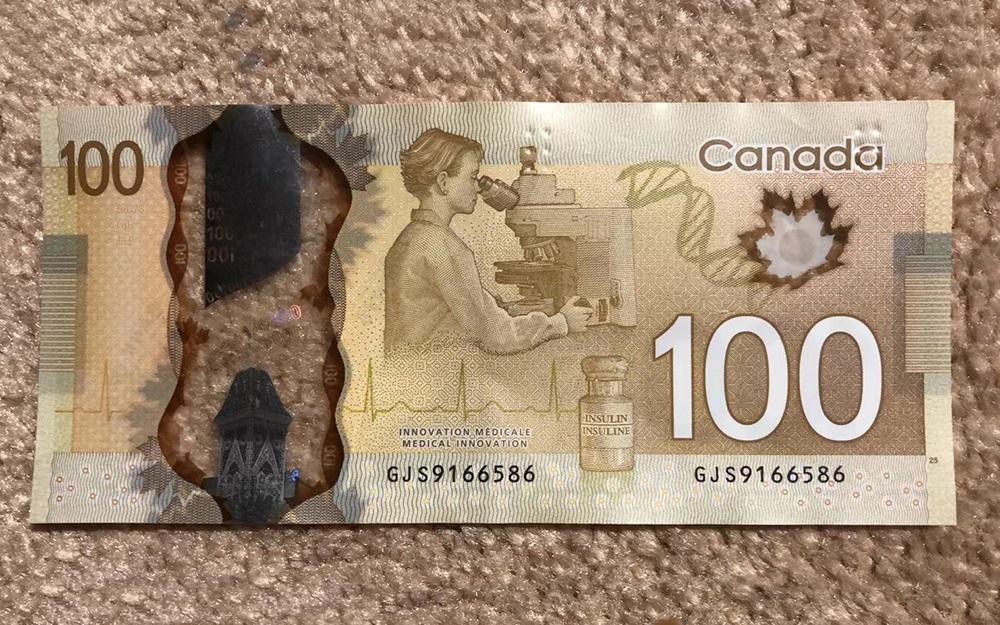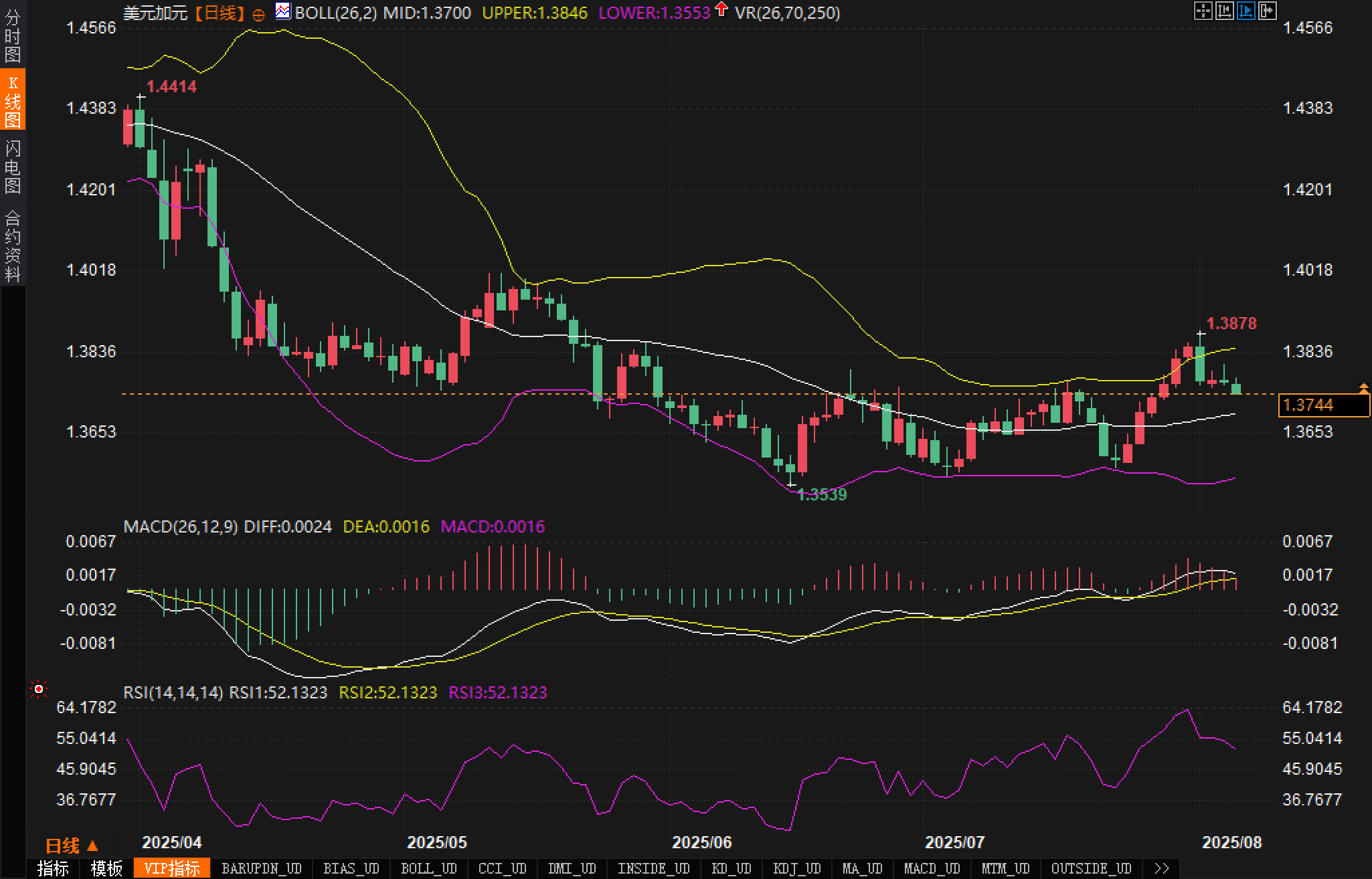Divergence in interest rate expectations escalates. Can USD/CAD hold at 1.37?
2025-08-06 21:52:03

Fundamentals
Recently, the US non-farm payroll data came in below expectations, triggering a market repricing of the Federal Reserve's policy outlook. The US dollar index came under pressure and retreated from its highs, indirectly driving the USD/CAD pair from its high of 1.3878 into a correction range. Although US Treasury yields remained generally firm, the dollar's internal driving force weakened, pushing the exchange rate through a technical pullback.
The Canadian dollar has shown resilience, thanks in part to stable crude oil prices and improved market risk appetite, which has put short-term pressure on the safe-haven US dollar. Meanwhile, Fitch Ratings, in its latest Canadian Consumer Monitor, noted that Canadian consumer spending is slowing, with projected growth of 2.0% in 2025 and a further decline to 0.7% in 2026. A cooling job market, stagnant service consumption, and rising uncertainty about exports to the US are key factors dampening consumption and growth.
Despite the Bank of Canada's decision to remain on hold at its last meeting, the market generally expects a rate cut to 2.25% by year-end. Current inflation remains around 3%, well above the 2% target, adding uncertainty to the monetary policy path. If July employment data and wage growth, due this week, weaken again, this could intensify market bets on the pace of rate cuts, impacting the Canadian dollar.
Technical aspects:
The current daily chart shows that USD/CAD has seen a slowdown in bullish momentum following a pullback from the 1.3878 high, with the pair testing support at the middle Bollinger Band level of 1.3700. The overall Bollinger Band structure maintains a diverging upper band and stabilizing lower band, suggesting increased volatility but a short-term consolidation phase.

The MACD indicator's two lines remain above the zero axis, and the red histogram is shrinking, suggesting that upward momentum is weakening but a clear death cross has not yet formed. If the histogram shrinks further or forms a top divergence, it will increase the possibility of a short-term correction.
The RSI indicator is running near 52, which is in a relatively neutral area. There are no overbought or oversold signals. Combined with the current K-line pattern, the exchange rate tends to enter a consolidation pattern, waiting for a new round of direction selection.
Structurally, the pair dipped to 1.3539 before rebounding, reaching a local top at 1.3878. The current range is tentatively between 1.3550 and 1.3850. Analysts believe short-term support is at the middle Bollinger band at 1.3700, with resistance at 1.3780 and 1.3878, respectively.
Market sentiment observation:
Market sentiment is currently highly cautious. Although USD/CAD saw a strong rally last week, the upward move lacked sustained volume, indicating a lack of appetite for chasing higher prices. The US dollar's rebound has been sluggish due to the dual constraints of weak data and an uncertain policy outlook.
Regarding sentiment indicators, the neutral RSI provides no clear direction, while the blunting of the MACD momentum reinforces the market's wait-and-see attitude. Implied volatility in the options market remains low, suggesting that traders are not strongly anticipating significant future fluctuations. The misalignment between Canadian dollar interest rate expectations and the outlook for US monetary policy is a key sentiment variable suppressing unilateral movements in the exchange rate.
Furthermore, recent pessimistic expectations regarding consumer spending and the job market in Canada have heightened market concerns about the Canadian dollar's fundamentals. While short-term bulls are still stubbornly defending key support levels, the exchange rate lacks further momentum, and sentiment is leaning towards a cautious bearish bias.
Market outlook:
Short-term outlook:
In the absence of high-level events this week, USD/CAD is expected to fluctuate in the range of 1.3650-1.3850, and the market will pay close attention to the Canadian employment report.
Analysts believe that if Canada's employment data is weaker than expected, coupled with slower wage growth, it may strengthen market bets on the Bank of Canada to cut interest rates this year, thereby suppressing the performance of the Canadian dollar, pushing the exchange rate to test the resistance area of 1.3878 and even hit the 1.3900 round mark;
On the contrary, if the data is strong, it may trigger a rebound in the Canadian dollar in the short term, and the probability of USD/CAD falling to the support area of 1.3700 or even 1.3650 will increase.
Medium- to long-term outlook:
From a trend perspective, USD/CAD found support at 1.3539. Although it rebounded later, it faced significant upward resistance. Analysts believe that if subsequent US data continues to weaken and the Federal Reserve's policy shift becomes clear, the US dollar may face adjustment pressure in the medium and long term.
If there is no substantial deterioration in Canadian economic data, the Canadian dollar may be expected to remain relatively stable. At that time, the USD/CAD will tend to maintain a medium- to long-term sideways consolidation pattern, and the upper and lower limits may remain between 1.3500 and 1.3900.
- Risk Warning and Disclaimer
- The market involves risk, and trading may not be suitable for all investors. This article is for reference only and does not constitute personal investment advice, nor does it take into account certain users’ specific investment objectives, financial situation, or other needs. Any investment decisions made based on this information are at your own risk.





















